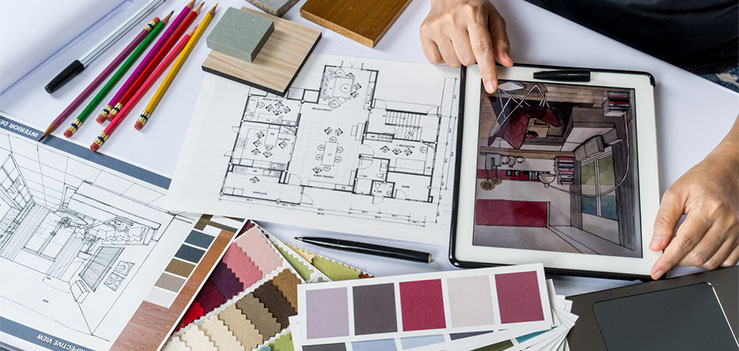Download a PDF of this Article
In the age of Pinterest, Houzz, and HGTV, it’s easy to get caught up in creating your dream home. It is fun and we love it too! But if you’re getting serious about turning that dream home into a reality, consider these five common pitfalls people experience when designing a new home—so that you don’t make the same mistakes.
Pitfall #1: You don’t start with the land
You’ve been dreaming about your new house for a long time—but have you considered how the land you’ve selected or considering will factor into your plans? It’s critical that you take the land into account first. What if you always pictured a private master retreat with great morning sun, only to realize too late that your owner’s suite would have to face the street to capture that sunlight?
Starting with the land isn’t only about aesthetics and function. It also affects cost. For example, if your new home is being built in a neighborhood, your utilities are, more than likely, ready to go. But if your land is in a more rural area, there’s a chance you may have to add infrastructure for water, sewer, power and a driveway—and that can get pricey.
Think you’ve found a great deal on some inexpensive land where you can build your new house? Don’t forget to factor in the cost of preparing the land for construction. Digging, grading, and other site work can get expensive, so don’t forget to take that into consideration when figuring out the total cost of your land.
For all of these reasons, it’s best to start your home building process by having your builder and/or architect assess your site. Doing this will save you money and time in the long run as your home is designed to complement the unique features of your land.
Pitfall #2: You don’t assemble your whole team from the beginning
You’re ready, you’re excited, and you want to see your vision for your new home brought to life. But taking your ideas right to an architect can be a potential pitfall to the home building process.
Never have an architect draw and spec out a whole house for you before you’ve defined your budget and met with your building team. Before you decide on any specific designs for your home, you need your builder to help you figure out whether your ideas are realistic.
These initial conversations with your team help set your expectations upfront. When you get each member of your team on the same page from the beginning, you’re more likely to end up with what you want, where you want it, and within your budget.
Pitfall #3: You design too big
If you thought cutting carbs was hard, you’re going to hate cutting things from your home design. But that becomes a necessity when people end up in the pitfall of designing their homes too big.
The danger of over-designing is that, when your plans get too expensive, you’re going to need to pare them down. Inevitably, this leads to disappointment. From that point on, you’re going to be comparing the things you are getting in your home to the things you’re not getting—and that can really take the fun out of the design process.
To avoid this pitfall, be sure to consider how you’re actually going to be living in the space. Do you really need that gourmet kitchen, or would a more modest, functional space make more sense for your lifestyle? Knowing this from the beginning will help you avoid having to make tougher decisions later.
Pitfall #4: You fail to consider resale value
You may not want to think about selling your home when it hasn’t even been built yet, but eventually the day will come when you need to sell.
True, it’s your home, and you don’t want to design solely for the next person. Start by designing for yourself and your family by creating a home that will function well for you. But remember that it’s balancing act between what you want and what will become a selling point later.
This is where your home building team can help by becoming your trusted advisors. They have the experience to help you make the considerations you’ll need to create a home that you not only love living in, but that will be attractive to future buyers.
Pitfall #5: You leave the future out of the equation
Planning on having kids—or do you have kids who will soon be moving out? Preparing to age at home? Want to add some extra square footage once you have the budget? These are all factors you need to consider when designing your home. Failing to design for the future can be a major pitfall that ends up costing you more money down the line.
Your home may be perfect for your current lifestyle, but our circumstances change constantly. With some advance planning, you can design and build your home now to accommodate changes in the future. For example, you may eventually want a finished basement. By knowing that ahead of time, your design-build team can set up the unfinished space for easy finishing, saving you time and money in the future when you decide to finish that space.
Building a new home comes with many potential pitfalls, but they can be easily avoided. Partner with an experienced builder you trust who can become your guide and help the process run as smoothly as possible.
